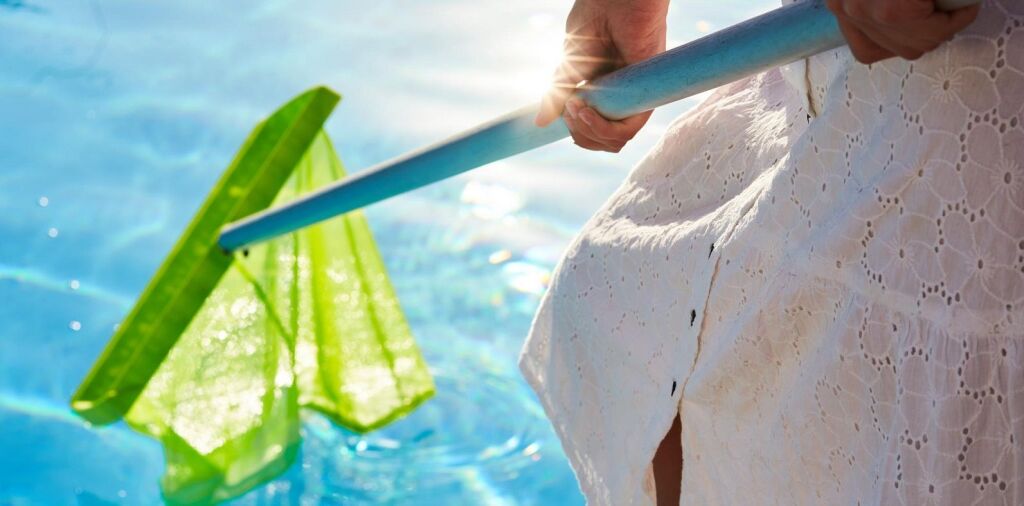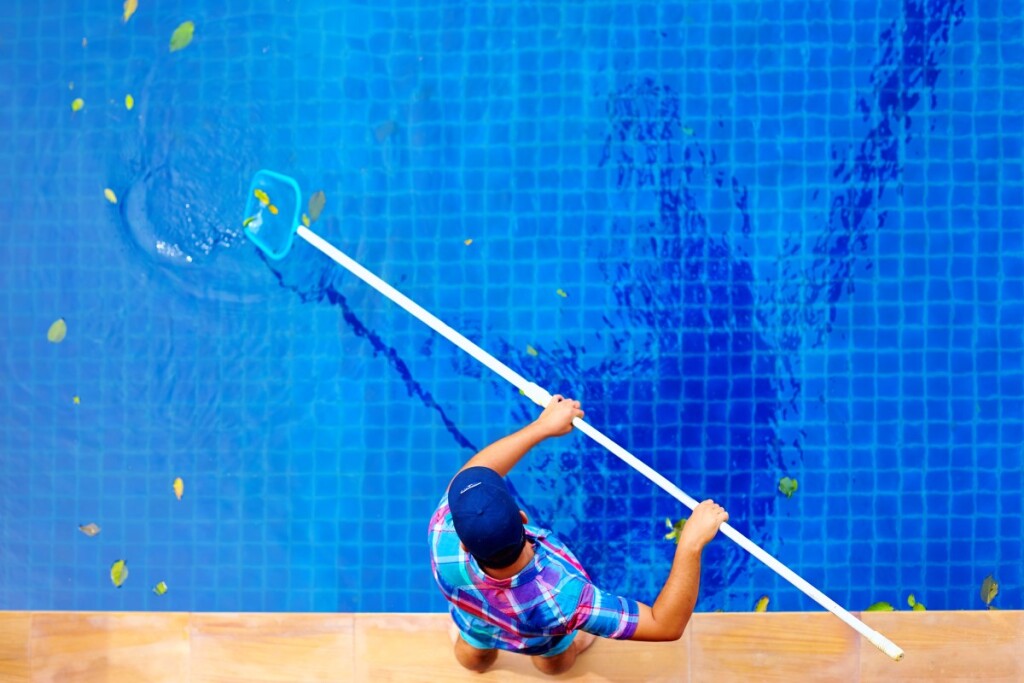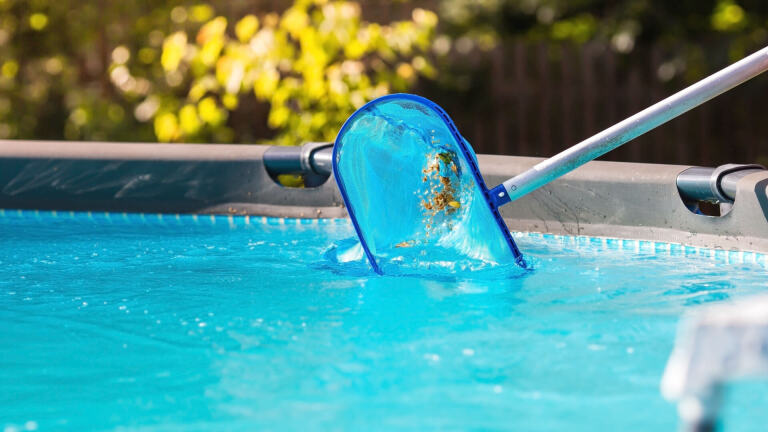There’s nothing quite like stepping into your own crystal-clear swimming pool on a sweltering Pennsylvania summer day. It’s your private oasis, a hub for family gatherings, and the perfect escape from the humid air. But as any pool owner knows, that sparkling paradise comes with a price—and not just the initial installation process. The ongoing chore of swimming pool maintenance can feel like a relentless drain on both your time and your wallet.
The constant cycle of skimming, vacuuming, testing, and adding chemicals can quickly transform your dream retreat into a dreaded task. It often feels like you have two choices: spend your precious weekends working on the pool or shell out a significant amount of money for a professional service.
But what if there was a third option? What if you could slash your pool maintenance expenses and reclaim your free time with a few clever, simple, and effective pool cleaning hacks? You don’t need a degree in chemistry or a garage full of expensive equipment. You just need a little know-how. This guide is designed to empower you with practical, DIY strategies that keep your pool sparkling clean and your budget intact, so you can spend less time working and more time splashing.

Deconstructing the Real Cost of Pool Maintenance
Before we dive into the solutions, it’s essential to understand exactly where your money is going. The term “pool upkeep cost” is a broad one, encompassing a variety of expenses that can add up surprisingly fast. For a typical homeowner in Pennsylvania, these costs can be broken down into several categories.
1. Chemicals: This is often the most significant recurring expense. A well-balanced pool requires a symphony of chemicals working in harmony.
- Sanitizers like chlorine: Essential for killing bacteria and algae. Costs vary based on type (tablets, granular, liquid).
- Shock Treatments: Needed to eliminate contaminants and reactivate chlorine.
- pH Balancers (pH Up/Down): Crucial for swimmer comfort and chemical effectiveness.
- Alkalinity Increasers: Stabilizes the pH to prevent wild fluctuations.
- Algaecides: Used to prevent and treat algae blooms.
- Clarifiers & Flocculants: Help clear up cloudy water.
- Calcium Hardness Increasers: Protects your pool surfaces from corrosion.
2. Tools & Equipment: The initial investment in cleaning tools is one thing, but they also wear out and need replacing. This includes skimmer nets, wall brushes, vacuum heads and hoses, and telescoping poles.
3. Equipment Upkeep & Repairs: Your pool’s circulatory system—the pump and filter system—is its heart. The pump motor can fail, seals can leak, and filter cartridges or sand need periodic replacement. These repairs can be unexpectedly costly.
4. Utilities:
- Electricity: Your pool pump can be one of the most energy-hungry appliances in your home, especially if you run it 8-12 hours a day.
- Water: Topping off the pool due to evaporation and splash-out adds to your water bill, a notable expense over a long summer.
5. Professional Services: Many Pennsylvanians opt for professional help, especially for opening the pool in the spring and closing it for the harsh winter. Weekly maintenance services can range from $100 to $400 per month.
When you add it all up, DIY maintenance can still cost between $500 and $1,500 per season, while professional services can easily exceed $2,000. Our goal is to drastically reduce that number.
Brilliant Time-Saving Pool Cleaning Hacks
Your time is valuable. These hacks are designed to minimize your labor so you can maximize your leisure.
1. The Tennis Ball Trick for Surface Oils
Sunscreens, lotions, makeup, and natural body oils create a slick, rainbow-colored sheen on the water’s surface that can clog your filter. Instead of buying pricey oil-absorbing sponges, simply toss a few clean tennis balls into your pool or directly into the skimmer basket. The natural fibers of the tennis ball are incredibly effective at soaking up these oils. The microfiber-like surface attracts and traps the greasy residue. Swap them out every few weeks, or when they start to look dingy, by running them through the washing machine (without fabric softener) and they’re ready to go again.
2. The Pantyhose Pre-Filter
Your skimmer basket is great at catching leaves and large bugs, but fine debris like pollen, dog hair, silt, and tiny insects can slip right through and head straight for your filter, clogging it faster. The solution? An old pair of pantyhose. Stretch the pantyhose around your skimmer basket to create an ultra-fine mesh liner. This simple addition will catch an astonishing amount of gunk, significantly extending the time between filter cleanings. Just remember to clean it out regularly, as it will fill up much faster than the basket alone.
3. Harness the Power of Baking Soda
Maintaining your pool’s pH and Total Alkalinity is a constant balancing act. If your pH is low (acidic), the water can irritate your skin and eyes and even corrode pool equipment. Instead of reaching for a branded “pH Increaser,” head to your kitchen pantry. Regular household baking soda (sodium bicarbonate) is a fantastic and cheap way to raise both pH and, more importantly, Total Alkalinity. Alkalinity acts as a buffer for pH, preventing it from swinging wildly. Add it slowly, dissolving it in a bucket of pool water first and pouring it around the edges of the pool. A general rule of thumb is 1.5 pounds of baking soda per 10,000 gallons of water will raise the alkalinity by about 10 ppm.
4. Go Robotic
While a robotic pool cleaner has an upfront cost, the time it saves is immeasurable. These self-contained units crawl the floor and walls of your pool, scrubbing surfaces and vacuuming debris into their own internal filter bag. Instead of spending an hour every week manually vacuuming, you simply drop the robot in and let it do the work. Over the course of a few summers, the time you save is well worth the investment.
Genius Money-Saving Pool Cleaning Hacks
Now let’s focus on keeping more cash in your pocket with these frugal yet effective strategies.
| Common Pool Problem | Expensive Store Solution | Frugal & Effective DIY Hack |
| Metal Stains (Brown/Green) | Commercial Stain & Scale Removers | Vitamin C (Ascorbic Acid) Tablets |
| Cloudy Water | Chemical Clarifiers | Natural Flocculants or a Small Amount of DE Powder |
| Stubborn Calcium Scaling | Harsh Acid-Based Cleaners | A Paste of Vinegar and Water (for waterline tile) |
| Low Calcium Hardness | “Calcium Hardness Increaser” | Calcium Chloride (e.g., driveway ice melt – ensure it is pure) |
1. Erase Stains with Vitamin C
If you notice brownish or greenish stains on your pool steps or liner, especially if you have well water, the culprit is likely metal deposits like iron or copper. Before buying a harsh chemical stain remover, try this magic trick. Place a large Vitamin C tablet (ascorbic acid) directly on the stain. If the stain lightens or disappears within a few minutes, you have a metal stain. You can then use a sock filled with crushed Vitamin C tablets to scrub away the rest or buy bulk ascorbic acid powder online to treat the whole pool.
2. Learning to Open and Close Your Pool
In Pennsylvania, paying for a professional pool opening and closing can cost hundreds of dollars each year. While it seems intimidating, the process is straightforward with a bit of research. Learning to properly remove your winter cover, reconnect your equipment, balance the initial water chemistry, and correctly winterize your plumbing in the fall is one of the single biggest money-saving skills a pool owner can learn. There are countless online tutorials to guide you through it step-by-step.
3. Buy Chemicals in Bulk and Off-Season
Don’t wait until Memorial Day to buy your chlorine tablets. Pool chemical prices often spike during peak season. Instead, stock up at the end of the season when stores are clearing out inventory or buy in bulk online during the winter. You can often save 25-50% on a season’s worth of supplies just by planning ahead.
4. Embrace the Solar Cover
A solar cover is a non-negotiable for any budget-conscious Pennsylvania pool owner.
- Heat Retention: It can raise your water temperature by 10-15°F, effectively extending your swimming season in the spring and fall without a costly heater.
- Evaporation Reduction: It dramatically reduces water evaporation, which means a lower water bill.
- Chemical Savings: By reducing UV exposure, it slows the degradation of chlorine, meaning your chemicals last longer and you use less. It’s an investment that pays for itself in a single season.
Proactive Swimming Pool Maintenance: The Ultimate Hack
The most effective hack of all is consistency. A proactive maintenance routine prevents small issues from becoming massive, time-consuming, and expensive problems.
Test Your Water Religiously
Don’t just guess. Inaccurate water chemistry is the root cause of most pool problems, from algae blooms to equipment corrosion. Test your water religiously 2-3 times per week during peak season. A quality test kit is your best friend. Here are the key parameters and their ideal ranges:
| Parameter | Ideal Range | Why It Matters |
| pH | 7.4 – 7.6 | Affects swimmer comfort and sanitizer effectiveness. |
| Total Alkalinity | 80 – 120 ppm | Stabilizes pH and prevents drastic swings. |
| Free Chlorine | 1 – 3 ppm | The primary sanitizer that kills germs and algae. |
| Calcium Hardness | 200 – 400 ppm | Protects plaster, vinyl, and equipment from damage. |
| Cyanuric Acid (CYA) | 30 – 50 ppm | Stabilizer that protects chlorine from being destroyed by sunlight. |
Understanding these five elements is the key to mastering your pool’s chemistry and avoiding the need for expensive “rescue” chemicals.
Brush, Skim, and Vacuum Consistently
Make it a habit. Skim leaves and debris off the surface daily before they have a chance to sink, decay, and stain your pool floor. Brush the walls and floor at least once a week to dislodge invisible algae spores before they can form a visible bloom. Regular vacuuming keeps the floor clean and reduces the workload on your filter. This simple 15-20 minute routine a few times a week is far less work than battling a full-blown algae infestation.

Conclusion: Your Pool, Your Rules, Your Savings
Your Pennsylvania swimming pool should be a source of joy and relaxation, not financial stress and endless chores. By adopting these DIY pool cleaning hacks, you shift the power back into your own hands. You become a smarter, more efficient pool owner who understands the science behind the sparkle.
From using a simple tennis ball to absorb oils to mastering your water chemistry with baking soda, these strategies prove that effective swimming pool maintenance doesn’t have to be complicated or expensive. It’s about working smarter, not harder.
So, embrace these tips. Enjoy the satisfaction of a pristine pool that you maintain yourself. And most importantly, enjoy the extra time and money you’ll have for what truly matters—making unforgettable summer memories with family and friends.

